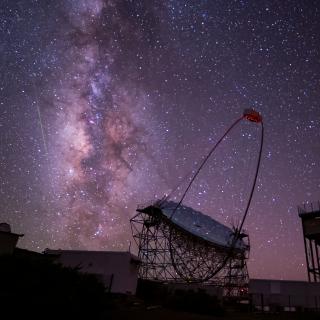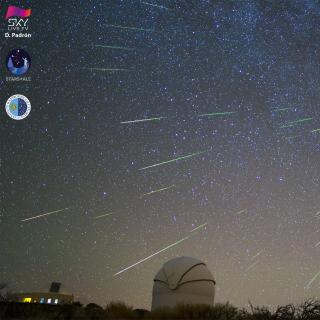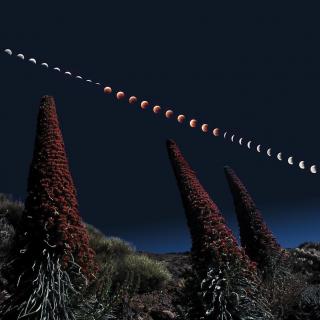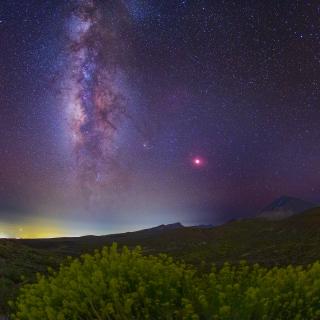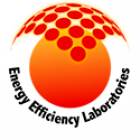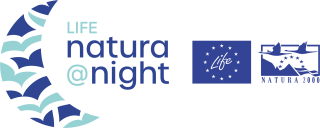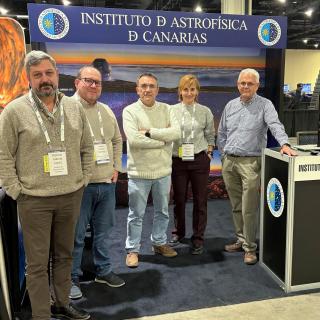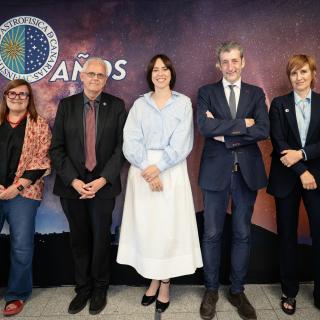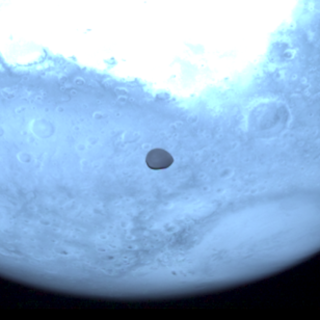Through collaboration between the Instituto de Astrofísica de Canarias (IAC) and the Sociedade Portuguesa para o Estudo das Aves (SPEA) within the framework of the projects Interreg EELabs and LIFE Natura@night, on the night of the 12t to 13th of August, the sky-live.tv channel will broadcast the maximum activity of the Perseid meteor shower from Madeira and from the Roque de los Muchachos Observatory (Garafía, La Palma).
Some 10% of the continental surface of the Earth is affected by light pollution, but if we take into account the SkyGlow produced by the effect of artificial lighting on the atmosphere, this percentage grows to 23%. The consequences of the emission of artificial lighting towards the sky affect biodiversity, health and, of course, astronomy; and future perspectives are not at all optimistic. However there are regions which are fighting to put this trend into reverse, such as Macronesia, where institutions in different ambits have united in a variety of projects to struggle against this type of atmospheric pollution, firstly by measuring the levels of light pollution in those areas it should not have reached, and then taking measures to stop its advance.
One of these initiatives is to waken the conscience of the population about the problem of light pollution. With this aim, on the night of Friday 12th to Saturday 13th August, the sky-live.tv channel will broadcast live the Perseid meteor shower, from the Pico do Arieiro (Madeira, Portugal: "This year the full moon will not bake it easy to to see the fainter meteorites. That is why the frequency of the Perseids will be lower- around one every 15 minutes-and we will see only the brightest meteors, which will still be impressive. As in previous years one needs to find a site far from urban centres, and to fix our attention on a point in the sky and wait patiently to be able to see some of the bright trails of the Perseids", comments Serra-Ricart, an astronomer at the IAC, and the co-ordinator of the EELabs project.
Every year at these dates the Earth passes through the cloud of dust and rocks which Comet Swift-Tuttle leaves behind on each of its orbits around the Sun. As a result, from mid-July until the end of August we can see the activity of the Perseids, also known as "Saint Lawrence’s Tears". This year, the maximum is expected at 01:00 AM on 13th August. In Europe, the night between 12th to13th August will show the maximum activity of this meteor shower. We know, from the best models, that the activity of the Perseids at maximum is around 100 meteors per hour (ZHR, or zenithal hourly rate), although, this year, the full Moon will make it difficult to observe throughout the night.
What are “shooting stars”?
“Shooting stars” are what we call the small particles of dust, of different sizes, some smaller than grains of sand, which are thrown off by comets or asteroids as they proceed along their orbits round the Sun. The resulting cloud of particles (called meteoroids) due to the thawing out of a comet caused by the Sun’s heat, is dispersed along the orbit of the comet, and the Earth passes through this every year on its orbit around the Sun. During this encounter the dust particles disintegrate as they enter the Earth’s atmosphere at high velocity, giving rise to the well know luminous trails whose scientific name is meteors. (A meteorite is a meteor big enough to survive its passage through the atmosphere and land on the surface of the Earth)
The Perseids are named after the constellation Perseus, where their radiant (the point in the sky from which they appear to be born) is located. The progenitor of the Perseids is Comet Swift-Tuttle, which was discovered in 1862, and which, with a diameter of some 26 km, is currently the largest object which makes periodic approaches to the Earth.
Live from Madeira and the Canaries
Within the framework of the outreach activities of the Energy Efficiency Laboratories (EELabs) project, the sky-live.tv channel will broadcast live this meteor shower from Pico do Arieiro (Madeira), thanks to the support of the Madeira Astronomy Association (AAM) and the Portuguese Society for the Study of Birds (SPEA), and from the Roque de los Muchachos Observatory (Garafía, La Palma),with the collaboration of the Society for the Promotion and Development of the Island of La Palma (SODEPAL) through the programe of the Promotion of AstroTourism, the MAGIC telescopes and the Cherenkov Telescope Array Observatory (CTAO).
The appointment will be next Wednesday 12 August at 23:15 UT (13 August 00:15 local time in the Canary Islands, 01:15 CEST, local time in Europe).
EELabs (eelabs.eu) is a project funded by the Programme INTERREG V-A MAC 2014-2020, cofinanced by FEDER (European Fund for Regional Development) of the European Union, under contract number MAC2/4.6d/238. Five centres in Macaronesia (IAC, ITER, ULPGC, SPEA-Azores and SPEA-Madeira) work in EELabs. The objective of EELabs is to build laboratories to measure the energy efficiency of the artificial night lighting in protected natural areas in Macaronesia (the Canaires, Madeira, and the Azores).
The LIFE Natura@night project is co-financed by the LIFE programme of the European Union, coordinated by the SPEA, and has the following partners the Câmara de Lobos, the Câmara Municipal do Funchal, the Câmara Municipal de Santa Cruz, the Câmara Municipal de Machico, the Câmara Municipal de Santana, the Câmara Municipal de Santa Cruz da Graciosa, Direção Regional dos Assuntos do Mar, Instituto das Florestas e Conservação da Natureza, Instituto de Astrofísica de Canarias, Instituto Tecnológico de Canarias, Fluxo de Luz and the Sociedad Española de Ornitología. (LIFE Natura@night)
Three Spanish supercomputing centres: the Centro Extremeño de Tecnologías Avanzadas (CETA-CIEMAT), the Consorci de Serveis Universitaris de Catalunya (CSUC) and the Instituto de Astrofísica de Canarias (IAC) will collaborate in the distribution of the web portal broadcast (sky-live.tv).
Didactic material:
- Star Counters: http://www.contadoresdeestrellas.org/
- Star Counters guide: https://t.co/zWiRtBRFPf
Audiovisual material:
- High resolution images of Perseids: https://flic.kr/s/aHsmJkhiGt
- High resolution images of meteor showers: https://flic.kr/s/aHsjH2BFa4

